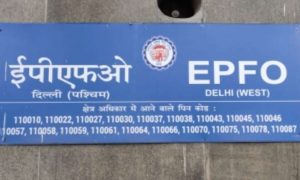Monsoon rains, a seasonal hallmark in many regions, including India, bring not only relief from the scorching heat but also a host of challenges. Among these challenges is the increased risk of mosquito-borne diseases. Stagnant water accumulation, heightened mosquito activity, and conducive environmental conditions for mosquito breeding significantly amplify the threat of diseases such as dengue, chikungunya, Zika virus, and malaria. This article delves into the factors contributing to these increased risks, with a particular focus on Zika virus transmission and its implications during pregnancy.
Also Read– 5 Common Eye Infections To Be Aware Of During Monsoon
Stagnant Water: Breeding Grounds for Mosquitoes
Puddles and Ditches
Monsoon rains often lead to the formation of puddles and ditches, which become ideal breeding grounds for mosquitoes, especially the Aedes aegypti species known for transmitting dengue fever.
Containers
Old tires, flowerpots, and other containers that collect rainwater provide suitable sites for mosquito larvae to develop. These containers are often overlooked, making them persistent breeding sites.
Read More: Discover the 6 Best Foods to Balance Hormones in Women
Water Bodies
Overflowing ponds, lakes, and rivers during the monsoon create additional space for mosquito larvae to thrive, further increasing the mosquito population.
Humidity: A Conducive Environment for Mosquitoes
The high humidity levels during the monsoon season facilitate the hatching of mosquito eggs and the development of larvae, contributing to an overall increase in mosquito activity.
Increased Mosquito Activity
Favorable Conditions
The warm, humid climate during the monsoon is perfect for mosquito growth and activity, leading to an increased mosquito population.
Read More: Planning to buy health insurance? Here are 10 changes you must be aware of
Increased Blood-Feeding
More outdoor gatherings and travel during the monsoon provide mosquitoes with ample opportunities to feed, thereby increasing the chances of disease transmission.
Increased Disease Transmission
Virus Transmission
Mosquitoes infected with viruses like dengue, chikungunya, Zika, and malaria can transmit these diseases to humans through their bites. The increased mosquito population during the monsoon exacerbates this risk.
Disease Outbreaks
The abundance of breeding sites and favorable conditions can lead to outbreaks of mosquito-borne diseases, posing a significant public health challenge.
Mitigating the Impact
Mosquito Control Measures
Implementing effective mosquito control measures is crucial. This includes draining stagnant water, using mosquito repellents and nets, and conducting fogging and spraying operations to reduce mosquito populations.
Public Awareness
Educating the public about the risks of mosquito-borne diseases and preventive measures is essential to curb the spread of these diseases.
Health Care
Ensuring access to prompt and effective medical care for individuals who contract mosquito-borne diseases is vital for managing and mitigating outbreaks.
Zika Virus in India: Spreading and Early Signs
Although Zika virus is not currently spreading widely in India, isolated cases have been reported. The following factors could contribute to a potential spread in India:
Read More: Stomach cancer 101: Watch out for these key symptoms, risk factors and treatment options
Mosquito Populations
India has large populations of Aedes aegypti and Aedes albopictus mosquitoes, the primary vectors for Zika virus.
Climate
India’s tropical climate is conducive to mosquito breeding, potentially facilitating the spread of Zika virus.
Travel
Travelers returning from countries with Zika outbreaks could introduce the virus to India.
Early Signs of Zika Virus Infection
Most people infected with Zika virus are asymptomatic, but those who do exhibit symptoms may experience:
Fever
Rash
Joint pain
Conjunctivitis (red eyes)
Headache
Muscle pain
Challenges of Asymptomatic Zika Patients for Public Health
Silent Transmission
Asymptomatic individuals unknowingly spread the virus, complicating efforts to track and contain outbreaks.
Also Read– Bandhan Bank Rises 2% On Robust Growth In Q1 Loans, Deposits; What Should Investors Do?
Diagnostic Challenges
The lack of symptoms makes diagnosis reliant on testing, which can be expensive and time-consuming, potentially delaying intervention.
Complications Arising from Zika Virus in Pregnancy
Congenital Zika Syndrome (CZS)
Zika virus infection during pregnancy can lead to CZS, characterized by severe birth defects such as microcephaly, neurological problems, and developmental delays.
Miscarriage and Stillbirth
Infection can increase the risk of miscarriage and stillbirth, particularly in the first trimester.
READ ALSO: Father-daughter test positive for Zika virus, had fever and rashes
Premature Birth
Zika infection can trigger premature labor and delivery, posing risks to the baby’s health.
Prevention and Public Health Response
Enhanced Surveillance
Developing effective surveillance strategies to identify and track asymptomatic cases is crucial.
Increased Testing Access
Improving access to affordable and reliable testing options for all populations is essential.
Public Education
Promoting awareness about the risks of asymptomatic Zika infection and preventive measures can help reduce transmission.
Long-Term Research
Investing in research to better understand the long-term health effects of Zika infection, especially in asymptomatic individuals, is necessary for effective public health planning.
Also Read– Budget 2024: How incentives from Modi 3.0 govt could shape affordable housing in 2025
Conclusion
Monsoon rains significantly impact the spread of mosquito-borne diseases, including the potential risk of Zika virus in India. Understanding the environmental and climatic factors that influence mosquito breeding and activity is crucial for implementing effective control measures. Public awareness, mosquito control, and healthcare access are essential components in mitigating the impact of these diseases and ensuring public health safety. As we continue to monitor and respond to these challenges, collaborative efforts between public health authorities, healthcare providers, and communities will be vital in safeguarding health during the monsoon season and beyond.





































